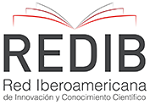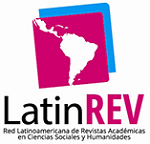Arsenic contamination of natural waters, soils and food products in Georgia
DOI:
https://doi.org/10.15649/2346030X.3763Keywords:
arsenic, food products, natural waters, pollution, soilsAbstract
Arsenic contamination of natural waters, soils, and food products in Georgia is discussed in this paper. Samples of rivers and artesian waters, as well as suspended solids and bottom sediments, were taken and analysed. Soil samples were selected from polluted, agricultural, recreational and background sites. Arsenic content was determined in water and soil samples, as well as in food products. Furthermore, the hydrochemical and microbiological characterisation of rivers (Lukhuni and Tskhenistskali), artesian and spring waters in the vicinity of arsenic processing enterprises of Racha-Lechkhumi and Kvemo Svaneti region were conducted. Analyses were carried out using modern methods and equipment that meet and correspond to international standards. Based on the received data, a map of arsenic contamination of the soils of the Racha-Lechkhumi and Kvemo Svaneti regions was compiled in the GIS system. This review is undertaken to give an overview of the latest findings on the issue of soil, water and food products. The most vulnerable points of soil arsenic contamination have been identified in the areas adjacent to arsenic factories in the research region, From the agricultural fields to the villages of Abari and Likheti, where phytoremediation was carried out.
References
IARC, "Arsenic and Arsenic Compounds IARC Monographs – 100C", 1980, 1987, 2004.
I. Kavtaradze, G. Avkopashvili, E. Shengelia, y L. Gvasalia, "Monitoring of heavy metals in soils and plants", Georgian Technical University, Proceedings, no. 3 p. 485, 2012.
G. Avkopashvili, M. Avkopashvili, A. Gongadze, y R. Gakhokidze, "Eco-Monitoring of Georgia’s Contaminated Soil and Water with Heavy Metals", Carpathian Journal of Earth and Environmental Sciences, vol. 12, no. 2, pp. 595–604, 2017.
G. Alexidze y R. Lolishvili, "Basic Aspects of Georgia's Environmental Pollution," en Materiales de la Conferencia Científica Internacional “Modern Technologies of Eco-friendly Products for Sustainable Development of Agriculture”, Tbilisi, pp. 33–45, 2016.
L. Shavliashvili, E. Bakradze, M. Arabidze, y G. Kuchava, "Arsenic pollution study of the rivers and soils in some of the regions of Georgia", International Journal of Current Research, vol. 9, no. 2, pp. 47002–47008, Feb. 2017.
L. Shavliashvili, M. Arabidze, E. Bakradze, G. Kuchava, y M. Tabatadze, "Chemical research of arsenic content in the soils of Ambrolauri municipality", Proceedings of the Institute of Hydrometeorology of the Technical University of Georgia, vol. 129, pp. 84–90, 2020.
N. Bagrationi, Study of arsenic industrial waste disposal conditions and ecological assessment of their distribution area, Tbilisi, 2016.
N. Bagrationi, L. Gvertsiteli, V. Gvakharia, A. Chirakadze, y T. Sharashidze, "Ecological description of the Arsenic waste storage and warehousing facilities", Proceedings of the Georgian Academy of Sciences, no. 4, 2014.
W. J. Fitz y W. W. Wenzel, "Arsenic transformation in the soil rhizosphere-plant system: Fundamental and potential application of phytoremediation", Biotechnology, vol. 99, pp. 259–278, 2002.
G. S. Fomin y A. G. Fomin, Water. Quality control and environmental safety international standards. Directory: Moscow, 2001.
V.A. Abakumov, Guide to methods of hydrobiological analysis of surface waters and bottom sediments, Leningrad: Gidrometeoizdat, 240p, 1983.
G. S. Fomin y A. G. Fomin, Soil, quality control and environmental safety according to international native standards, Moscow: VNII Standard, pp. 300, 2001.
Water Researcher Institute of Slovak Republic, "Risk Analysis Methodology Of The Arsenic Impact On The Water Resources And Its Application In Pilot Basin", 2019.
Government of Georgia, "The maximum permissible concentration following the technical regulation of surface water”, Decree No. 425, Dec. 31, 2013.
Government of Georgia, "Technical regulations for protection against drinking water pollution in Georgia", Decree No. 58, Jan. 15, 2014.
Ministry of Labor, Health and Social Protection of Georgia, "Norms of the qualitative state of the environment", Decree No. 297/N, Aug. 16, 2001.
G. Supatashvili, Environmental Chemistry (Ecochemistry), Tbilisi: University Publishing House, 187p, 2009.
T. Urushadze (Ed.), Soils of Georgia (scale 1:500,000), Kartograph, Tbilisi: Publishing House, 2019.
National Academy of Sciences of Georgia y Agrarian University of Georgia, Soil Atlas of Georgia, 2019.
Ministry of Labor, Health and Social Protection of Georgia, "Sanitary rules and norms for the quality and safety of food raw materials and food products", Decree No. 301/N, Aug. 16, 2001.
Downloads
Published
How to Cite
Issue
Section
Altmetrics
Downloads
License
Copyright (c) 2025 AiBi Journal of Research, Administration and Engineering

This work is licensed under a Creative Commons Attribution 4.0 International License.
The journal offers open access under a Creative Commons Attibution License

This work is under license Creative Commons Attribution (CC BY 4.0).











